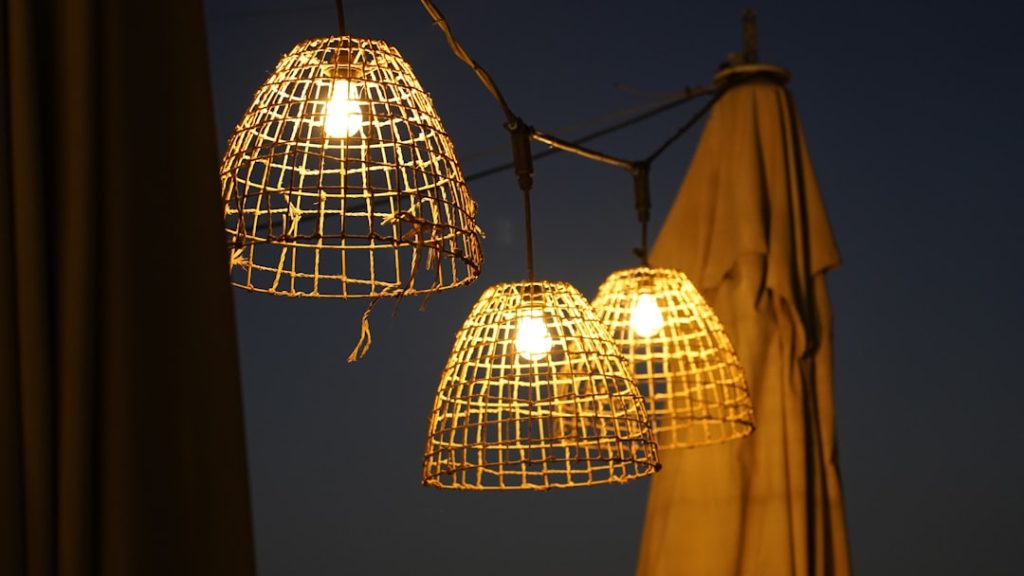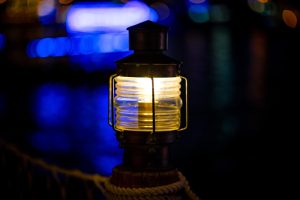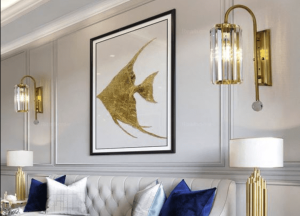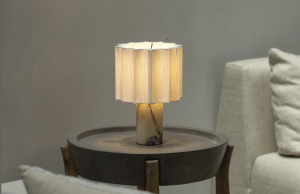Embedded LED lights, also known as recessed lighting, have gained significant popularity in modern interior design due to their sleek appearance and versatility. These fixtures are installed into the ceiling or walls, creating a seamless look that enhances the aesthetic appeal of any space. Unlike traditional light fixtures that protrude from the surface, embedded LED lights are flush with the ceiling, providing a clean and unobtrusive lighting solution.
This design not only maximizes headroom but also allows for a more open and airy feel in a room. The technology behind LED lighting has evolved dramatically over the past few decades, making it a preferred choice for homeowners and designers alike. LEDs are known for their energy efficiency, longevity, and low heat emission compared to incandescent or fluorescent bulbs.
As a result, embedded LED lights not only contribute to a stylish ambiance but also offer practical benefits such as reduced energy bills and minimal maintenance. With a variety of styles, colors, and brightness levels available, embedded LED lights can be tailored to suit any living room design, making them an ideal choice for contemporary homes.
Benefits of Using Embedded LED Lights in Your Living Room
Layered Lighting for Ambiance
By strategically placing embedded LEDs throughout the room, homeowners can achieve layered lighting that enhances the overall ambiance. This flexibility allows for the creation of focal points, such as artwork or architectural features, while also providing general illumination.
Energy Efficiency and Cost Savings
In addition to aesthetic benefits, embedded LED lights Omloa are highly energy-efficient. They consume significantly less power than traditional lighting options, which translates to lower electricity bills over time. For instance, an LED bulb can use up to 80% less energy than an incandescent bulb while providing the same amount of light.
Long-Lasting and Environmentally Friendly
Furthermore, embedded LEDs have an impressive lifespan, often lasting up to 25,000 hours or more. This longevity means fewer replacements and less waste, making them an environmentally friendly choice for conscientious homeowners.
How to Choose the Right Embedded LED Lights for Your Living Room
Selecting the appropriate embedded LED lights for your living room involves considering several factors that align with your design goals and functional needs. First and foremost, it’s essential to determine the brightness level required for your space. Measured in lumens, the brightness of LED lights can vary significantly.
For a living room, a range of 1,500 to 3,000 lumens is typically recommended, depending on the size of the room and the desired ambiance. It’s crucial to balance brightness with warmth; warmer color temperatures (around 2700K to 3000K) create a cozy atmosphere, while cooler temperatures (4000K and above) lend a more modern feel. Another important consideration is the beam angle of the embedded LED lights.
A narrow beam angle (less than 30 degrees) is ideal for highlighting specific areas or features within the room, such as artwork or architectural details. In contrast, a wider beam angle (60 degrees or more) provides broader illumination, making it suitable for general lighting purposes. Additionally, consider the dimming capabilities of the fixtures; many embedded LED lights are compatible with dimmer switches, allowing you to adjust the brightness according to your needs and preferences.
Installation Process of Embedded LED Lights
The installation process for embedded LED lights can vary based on the existing structure of your living room and whether you are retrofitting or starting from scratch. If you are installing new recessed lighting in an existing ceiling, it is essential to first plan the layout carefully. Marking the locations where you want to install the lights will help ensure even distribution and optimal lighting effects.
It’s advisable to use a stud finder to avoid electrical wires or plumbing hidden within the ceiling. Once you have marked your desired locations, you will need to cut holes in the ceiling using a drywall saw or hole cutter that matches the size of your chosen fixtures. After creating the openings, run electrical wiring from your power source to each light location.
This step may require knowledge of local building codes and safety regulations; if you are unsure about handling electrical work, hiring a licensed electrician is highly recommended. After wiring is complete, connect each light fixture according to the manufacturer’s instructions and secure them in place before restoring power and testing the lights.
Creative Ways to Use Embedded LED Lights in Your Living Room
Embedded LED lights offer endless possibilities for creative applications in your living room design. One popular approach is to use them for accent lighting, highlighting specific areas such as bookshelves or artwork. By placing recessed lights above these features, you can draw attention to them while creating a visually appealing contrast with surrounding spaces.
This technique not only enhances the aesthetic appeal but also adds depth and dimension to your living room. Another innovative use of embedded LED lights is in creating a layered lighting scheme that combines ambient, task, and accent lighting. For instance, you can install recessed lights around the perimeter of the ceiling for general illumination while incorporating additional fixtures like floor lamps or table lamps for task lighting in reading areas.
This combination allows for flexibility in lighting options depending on the time of day or activity taking place in the room. Additionally, consider using color-changing LED lights that can be controlled via smartphone apps; this feature enables you to customize your living room’s ambiance effortlessly.
Maintenance and Care Tips for Embedded LED Lights
Cleaning the Fixtures
One essential maintenance task is cleaning the fixtures periodically to remove dust and debris that may accumulate over time. A soft cloth or microfiber duster can be used to gently wipe down the surface of the lights without scratching them. It’s advisable to turn off power before cleaning to avoid any electrical hazards.
Monitoring Performance
Another important aspect of maintenance is monitoring the performance of your embedded LED lights. While LEDs are known for their longevity, they can occasionally flicker or dim if there are issues with wiring or compatibility with dimmer switches. If you notice any irregularities in performance, it may be necessary to consult with an electrician to diagnose and resolve any underlying issues promptly. Additionally, keeping an eye on any warranties provided by manufacturers can help ensure that you are covered in case of defects or malfunctions.
Conclusion and Benefits
In conclusion, embedded LED lights represent a modern solution for enhancing both functionality and aesthetics in living rooms. Their energy efficiency, versatility in design applications, and ease of maintenance make them an attractive option for homeowners looking to elevate their interior spaces. By understanding how to choose the right fixtures and creatively incorporating them into your living room design, you can create an inviting atmosphere that reflects your personal style while enjoying the practical benefits that come with this innovative lighting technology.






More Stories
Embracing Nostalgia with a Retro Kerosene-Style Lantern
Elegant Cold Marble Base Table Lamp for Dining Room
Enhance Your Living Room with a Bamboo Glass Table Lamp